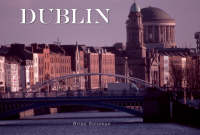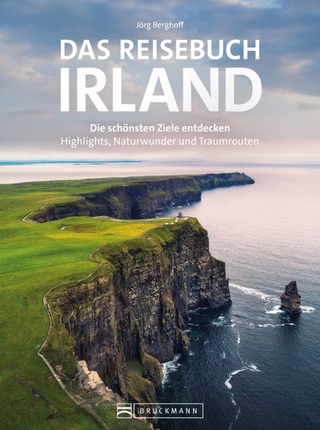
Dublin
Seiten
2008
Compendium Publishing (Verlag)
978-1-906347-64-2 (ISBN)
Compendium Publishing (Verlag)
978-1-906347-64-2 (ISBN)
- Titel ist leider vergriffen;
keine Neuauflage - Artikel merken
An illustrated guide to the city, people and history of Dublin.
Dublin, the capital of the Irish Republic located on the River Liffey, was first settled by Vikings, but fell under Irish control on April 23, 1014, when the Irish High King, Brian Boru, defeated a Viking army at the Battle of Clontarf. Dublin fell to the Anglo-Norman invasion, on September 21, 1170. Henry II ordered the construction of Dublin Castle in the early 13th century and the defenses of the city were further strengthened by the creation of the 'Pale', a heavily defended hinterland. Following the Reformation and the dissolution of the monasteries, land previously held by monastic orders in and around the city was released for redevelopment and a considerable amount of building work occurred, such as the College of the Most Holy Trinity, founded on the orders of Elizabeth I in 1592.During the 17th century further work was undertaken, but it was during the Georgian period - the 18th century - that many of the city's finest buildings were built.
Dublin continued to expand during the 19th century as a result of industrialization and since gaining its independence and joining the European Union, the Irish Republic in general - and Dublin in particular - has benefited from European funds to boost a 'Celtic Tiger' economy that has seen Dublin transformed into a major investment center and tourist capital.
Dublin, the capital of the Irish Republic located on the River Liffey, was first settled by Vikings, but fell under Irish control on April 23, 1014, when the Irish High King, Brian Boru, defeated a Viking army at the Battle of Clontarf. Dublin fell to the Anglo-Norman invasion, on September 21, 1170. Henry II ordered the construction of Dublin Castle in the early 13th century and the defenses of the city were further strengthened by the creation of the 'Pale', a heavily defended hinterland. Following the Reformation and the dissolution of the monasteries, land previously held by monastic orders in and around the city was released for redevelopment and a considerable amount of building work occurred, such as the College of the Most Holy Trinity, founded on the orders of Elizabeth I in 1592.During the 17th century further work was undertaken, but it was during the Georgian period - the 18th century - that many of the city's finest buildings were built.
Dublin continued to expand during the 19th century as a result of industrialization and since gaining its independence and joining the European Union, the Irish Republic in general - and Dublin in particular - has benefited from European funds to boost a 'Celtic Tiger' economy that has seen Dublin transformed into a major investment center and tourist capital.
Brian Solomon specializes in landscape and railway photography splitting his time between the United States and Europe. He lives in Dublin and Monson, MA thus getting the best of both worlds.
| Erscheint lt. Verlag | 7.8.2008 |
|---|---|
| Zusatzinfo | 220 colour photos |
| Verlagsort | London |
| Sprache | englisch |
| Maße | 270 x 190 mm |
| Themenwelt | Bildbände ► Europa ► Irland |
| ISBN-10 | 1-906347-64-6 / 1906347646 |
| ISBN-13 | 978-1-906347-64-2 / 9781906347642 |
| Zustand | Neuware |
| Haben Sie eine Frage zum Produkt? |
Mehr entdecken
aus dem Bereich
aus dem Bereich
die ultimativen Traumstraßen zwischen Dublin und Donegal
Buch | Hardcover (2023)
Bruckmann (Verlag)
CHF 44,90
Die schönsten Ziele entdecken — Highlights, Naturwunder und …
Buch | Hardcover (2024)
Bruckmann (Verlag)
CHF 49,90
50 Ziele, die Sie gesehen haben sollten
Buch | Hardcover (2022)
Bruckmann (Verlag)
CHF 45,90


